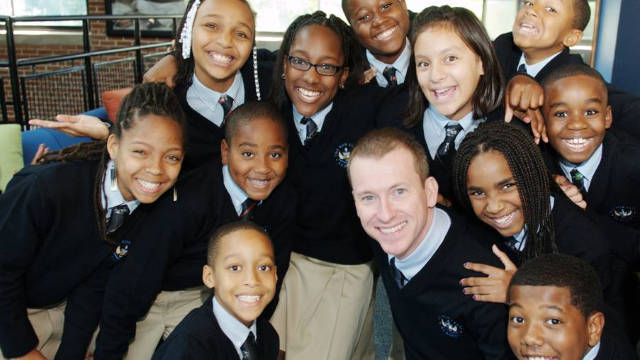
Today, I began reading
Transforming Teacher Education: What Went Wrong With Teacher Training, and How We Can Fix It, edited by Valerie Hill-Jackson and Chance W. Lewis. Since much of the blog has focused on my knitting recently, I thought I would swing things back to education for a while.
The book consists of four main parts: A brief history of teacher education, a reconceptualization of implementation, efforts towards teaching training reform, and the future of teacher education. As I read the book, I will summarize its points here, along with my thoughts.
Tonight, I will talk about Part I: The History of Teacher Education. The book begins by discussing how the standard student has changed since America began having schools; in the beginning students were primarily white, upper-class Protestant males. School was intended to preen students into leaders for their communities. Today, our schools are incredibly diverse in race, socioeconomic status and more. Students our on their way to a myriad of careers.
Similarly, the environment of learning has changed. At first, learning took place at home, or in the church. As America became more developed, school buildings popped up. With an increase in students, the demand for teachers increased. However, the image of teachers did not change very much. Teaching was commonly a transition role; a few years between college and a "real" job for men. It was considered lower than medicine, law, etc. When more women entered the teaching world, that view did not change.
How did teacher training come about? In the 1830s, as the demand for teachers continued to rise, it was decided that teacher training should last at least one year, and focus on knowledge acquisition, pedagogy, classroom management, and practice (sound familiar? Hint: my teacher program in 2010-2011 focused on the same issues). Taking an entire year was expensive and time-consuming. Therefore, institutions began holding 4-6 week institutes throughout the year. Teachers would continue attending them after gaining certification. As time went on, training became integrated into high school. Then, it progressed into college. In other words, teacher training was now taking place for several years. There was a general shortage of certified teachers because of this (and the many rural communities with lack of access to training). By the 1960s, states had certification requirements, and it was difficult to teach without a college degree.
Alternative teaching programs first popped up in the post-Sputnik years. For the first time, there was an option for those who had not studied education in college to receive the proper training in order to teach. However, the programs did not last very long and slowly fizzled out. The book ends in the late 1980s, with an attempt at teacher education reform. It included national standards, earning at Bachelor's degree, competitive salaries and performance-related incentives.
The book then suggests what should happen in the future: Raising the status of teachers, ensuring equality for all students (regardless or race, gender, etc. This includes those students in dilapidated schools), and giving teachers a more powerful voice in the politics of schools.
I think its interesting that the book does not take the changing view of
what learning is into consideration. During America's history, learning theories have come and gone, each leaving its impact in the classroom. Certainly teacher training would include the definition of learning and current theories. I definitely agree that the status of teachers should be increased. Until I stepped into the classroom last fall, I had no idea how much time and energy it take to be a good teacher. Lately, teachers seem to get a lot of the blame and little support. I was in a small, rural school with very few behavioral problems, and teaching was still a tremendous effort. While not every teacher is a good teacher, all teachers deserve respect for their efforts.
Stay tuned for Part II!





.jpg)





 Today, I began reading Transforming Teacher Education: What Went Wrong With Teacher Training, and How We Can Fix It, edited by Valerie Hill-Jackson and Chance W. Lewis. Since much of the blog has focused on my knitting recently, I thought I would swing things back to education for a while.
Today, I began reading Transforming Teacher Education: What Went Wrong With Teacher Training, and How We Can Fix It, edited by Valerie Hill-Jackson and Chance W. Lewis. Since much of the blog has focused on my knitting recently, I thought I would swing things back to education for a while.

















